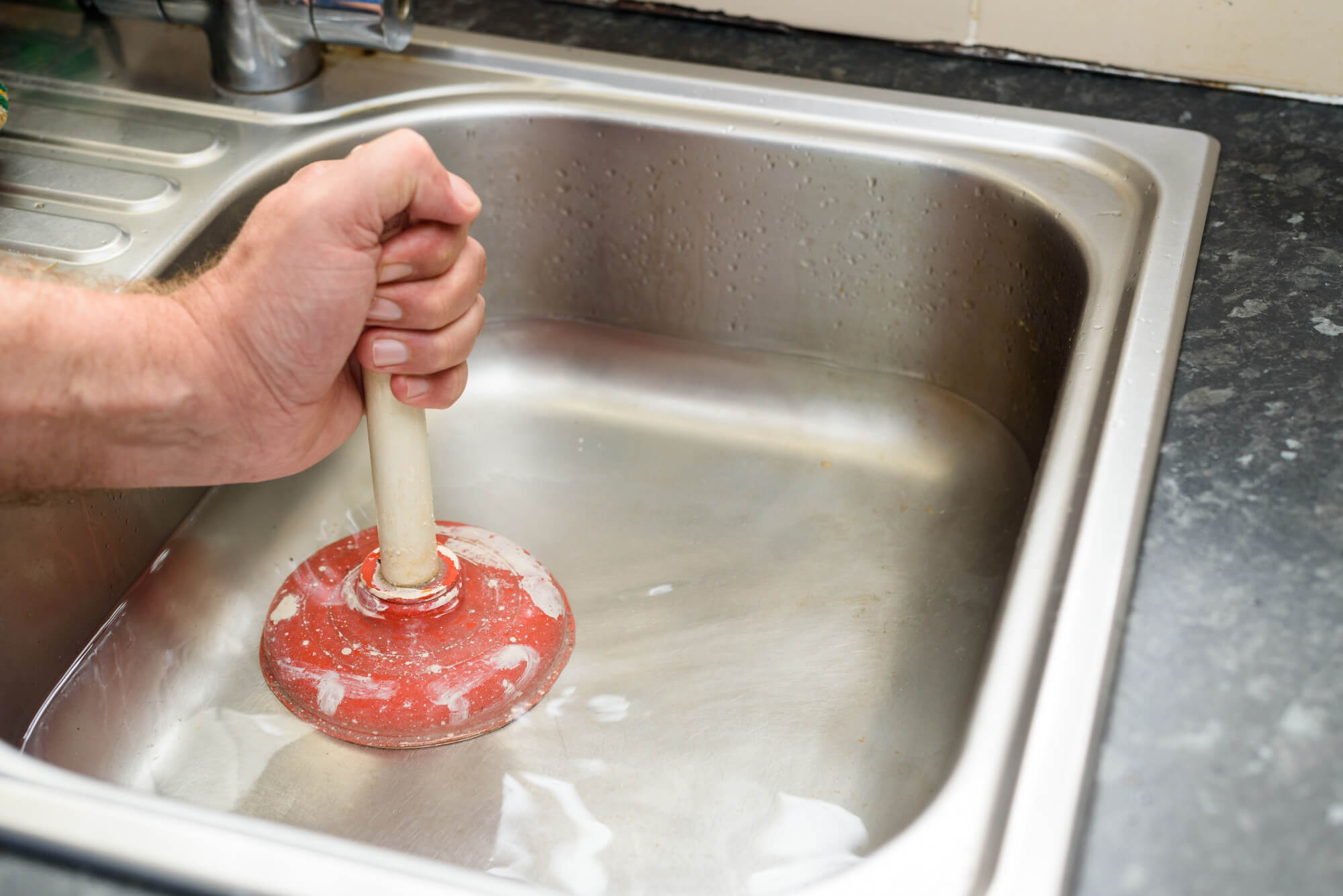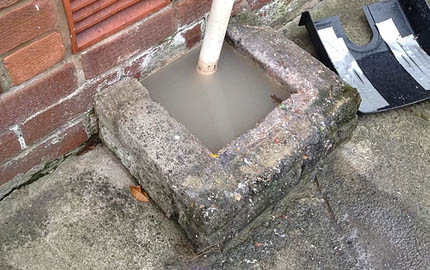Pointers for Handling a Blocked Drain Before Contacting Plumbing Professionals
Pointers for Handling a Blocked Drain Before Contacting Plumbing Professionals
Blog Article
How do you feel with regards to Some easy tips to fix blocked drains?

Introduction
Taking care of a blocked drain can be a discouraging experience, interrupting daily activities and possibly triggering damage to your building. Nonetheless, prior to connecting to pipes experts, there are steps you can require to deal with the problem on your own. In this overview, we'll check out do it yourself options and preventive measures to deal with a blocked drain efficiently.
Identifying the Problem
The initial step in attending to a blocked drain is identifying the indications. Slow water drainage, gurgling audios, foul odors originating from drains, or water support up are common indications of a blocked drainpipe. Identifying these signs early can aid avoid better issues.
Typical Root Causes Of Blocked Drainpipes
Comprehending the aspects that add to drain pipes obstructions is necessary for effective resolution. Common wrongdoers consist of hair, soap scum, oil, food debris, and foreign items like hygienic items or paper towels. Tree roots attacking below ground pipelines can additionally trigger considerable blockages.
Do it yourself Solutions
For small obstructions, several DIY remedies can be effective. Pouring boiling water down the drainpipe can help liquify grease and particles. Baking soda and vinegar or a combination of salt and cooking soda can act as natural cleansers. Making use of a bettor or plumbing snake to displace obstructions is an additional choice.
Tools and Devices
Having the right tools handy can make DIY drainpipe cleaning extra efficient. A bettor is a functional tool for removing blockages in sinks, bathrooms, and showers. A plumbing serpent or auger can get to much deeper obstructions, while drainpipe cleaning chemicals can be made use of very carefully for stubborn obstructions.
Safety nets
To prevent future clogs, adopting preventive measures is vital. Mount drain guards or strainers to capture hair and debris before they enter the pipelines. Consistently flush drains pipes with warm water to liquify grease buildup, and stay clear of disposing of grease or strong waste down the tubes.
When to Call an Expert
While do it yourself services can solve minor clogs, specific indications show the need for specialist support. Relentless blockages, foul odors despite cleaning up initiatives, or multiple drains pipes backing up at the same time are warnings that require professional treatment.
Choosing the Right Pipes Solution
When choosing a plumbing solution, consider factors such as experience, licensing, and client reviews. Choose a respectable plumbing technician with a performance history of high quality workmanship and clear pricing methods.
Expense Considerations
The expense of professional drain cleaning company can vary depending upon the extent of the blockage and the plumbing technician's prices. Demand quotes from numerous providers and inquire about any surcharges to make certain openness and stay clear of surprises.
Safety and security Measures
When attempting do it yourself drainpipe cleansing, focus on safety. Put on protective gloves and eyeglasses to stay clear of contact with damaging chemicals or germs. Never mix various drain cleaning items, as this can generate hazardous fumes.
Situation Studies
Real-life examples illustrate the performance of DIY solutions and the relevance of prompt professional treatment in dealing with drain obstructions.
Conclusion
By adhering to the suggestions outlined in this guide, you can efficiently take on obstructed drains and prevent future plumbing issues. Whether choosing DIY remedies or looking for expert assistance, prompt activity is vital to keeping a healthy and balanced pipes system and preserving the stability of your home.
How to Clear a Clogged Drain Yourself (And When to Call In the Professionals)
What Can Clog a Drain
Dirt Skin flakes Hair Grease Soap scum Food Offset pipes Tree roots Small objects Mineral buildup DIY Tricks to Unclog a Drain
You can fix this! Once you have identified the source of the clog (or have a vague idea), you can try one or a combination of these fixes in order to clear your plumbing.
Wire Hanger or Snake
Untangle and clear out hair from a drainpipe with a homemade snake. Use a straightened-out wire hanger with a 90-degree angle hook to locate the clog and drag out any unwanted material.
Remember not to push the clog further down to where the wire hanger cannot reach! If you need to follow up with a plunger, give it a try. Your efforts might be more successful after it’s been wire-snaked.
If you want to get fancy and don’t have a wire hanger to spare, head to the store and pick up a hand-operated drain snake. You can get one for $10-$30. It may save you the hassle, and provide additional length to reach deep into the clogged pipe.
Plunger
A cup plunger has a suction cup attached to a wooden handle. The rubber creates a seal around the drain, and increases the pressure force of the plunger.
Plunge for 30-second increments to loosen the clog. This may need to be repeated over the course of 15-20 minutes. Once plunged, run the water to flush the remaining material out of the drain.
Remember– never use a plunger if you have used a chemical drain cleaner. These chemicals can splash up from the force of the plunger and cause serious injury or burns.
Boiling Water
Hot water can sometimes break up materials into a flushable amount. Dirt, grease, and soap buildup requires heat in order to unstick from surfaces.
Take your kitchen kettle and heat your water to a boil. Once it reaches a rolling boil, pour it directly down the drain into the blockage. Carefully follow with plunging, if necessary.
Don’t worry if this takes more than one try! It can often take multiple kettles and repeated plunging in order to clear a particularly stubborn clog.
Chemical Drain Cleaner
As a last resort, pick up a bottle of chemical drain cleaner. Drain-cleaning chemicals are potent, and not very good for the environment.
You may need to wear protective eyewear in gloves before handling your bottle of chemical drain cleaner. Follow the instructions printed on the bottle, and flush with water as soon as the instructions allow. Do not follow with plunging.
Baking Soda and Vinegar
As a safer alternative to chemical drain cleaner, baking soda and vinegar can create a chemical reaction that clears tough clogs.
Combine one cup of cleaning vinegar with one cup of boiling water, and set aside. Once you have done this, pour half a cup of baking soda down the drain. Give the baking thirty seconds to settle and cover a large portion of the problem drain.
Following the baking soda, pour down your vinegar and hot water solution. Once the vinegar and baking soda combine, the mixture will bubble and fix. Let this reaction fizzle in the drain for about an hour.
After an hour, follow with a kettle’s worth of hot water. The heat and liquid should flush out any remaining material.
When to Call a Plumber
If your DIY attempts haven’t cleared your clog drain, it’s time to call in a professional. It’s not worth losing access to your kitchen sink or high-traffic bathroom. A clog in a vital area can keep you from the things you’d rather be doing, and derail your routine.
Anytime a clog is causing water to spread is a time to call in a plumbing service. What starts out as a little bit of water can quickly grow into serious, expensive water damage.
Additionally, a serious clog can result in burst pipes or serious leaks. Make sure you know when to take it seriously!
https://myguysnow.com/how-to-clear-a-clogged-drain-yourself-and-when-to-call-in-the-professionals/

Do you like more info about ? Place a short review down the page. We will be pleased to know your ideas about this piece. In hopes to see you back again before long. Sharing is nice. Helping others is fun. We appreciate reading our article about How to handle a clogged drain in your home.
Book Today Report this page